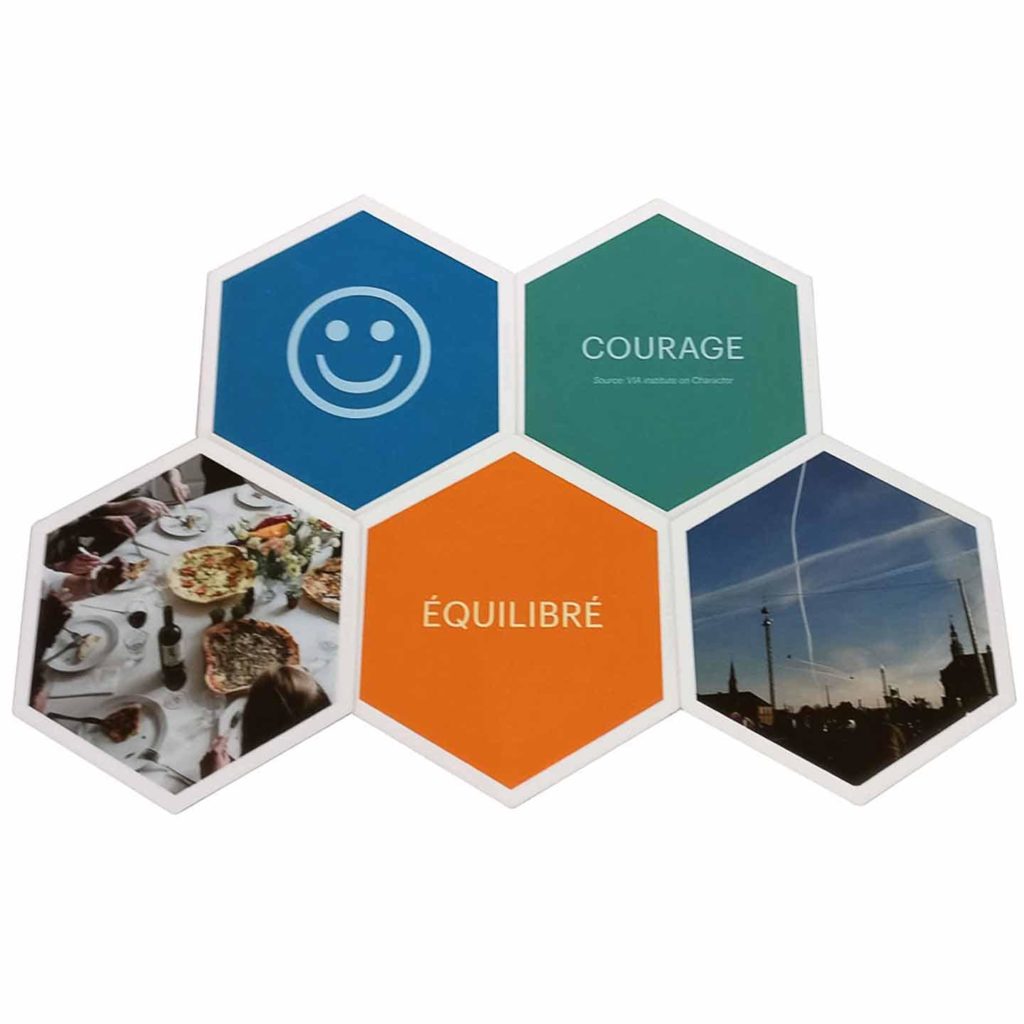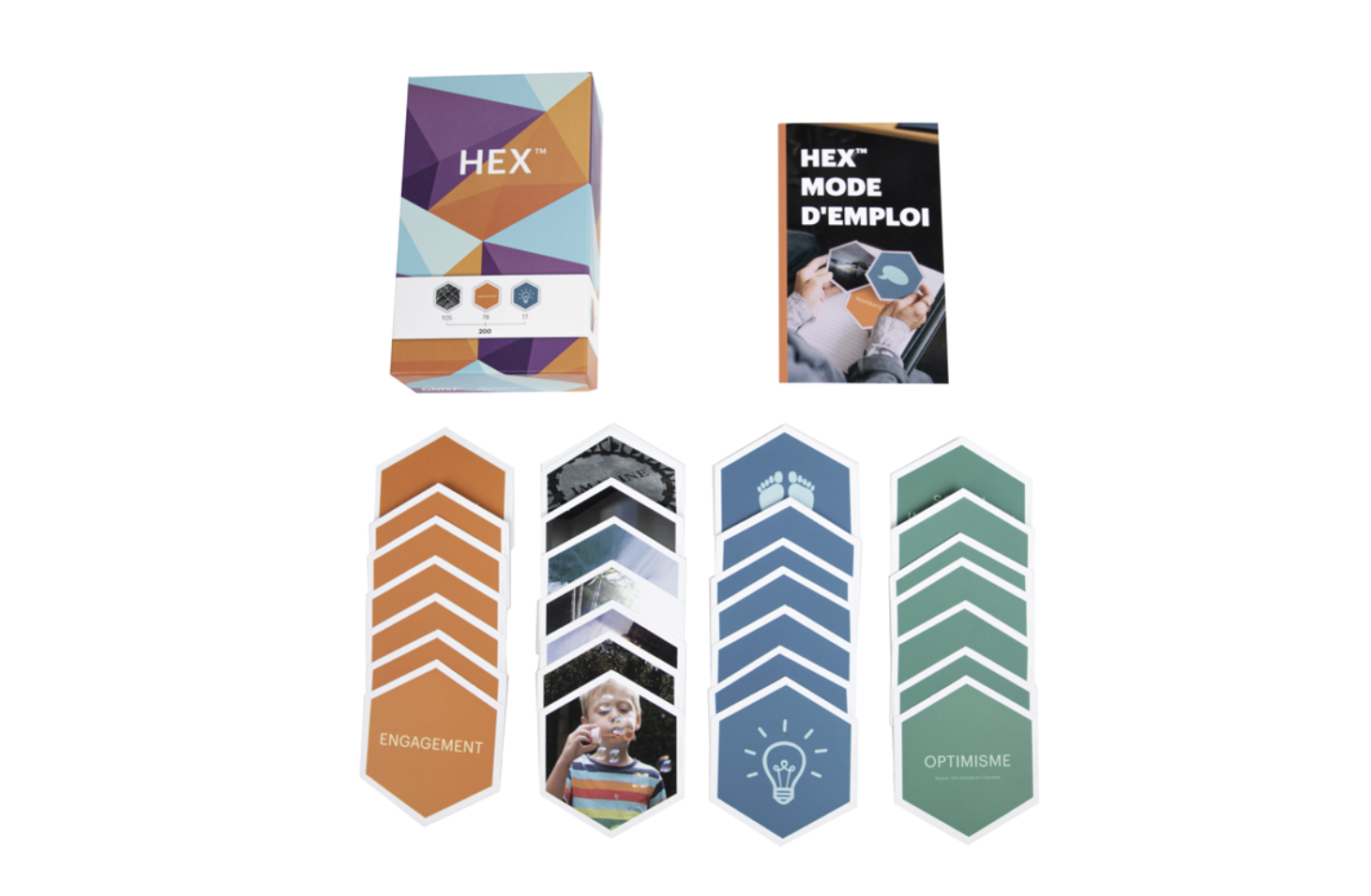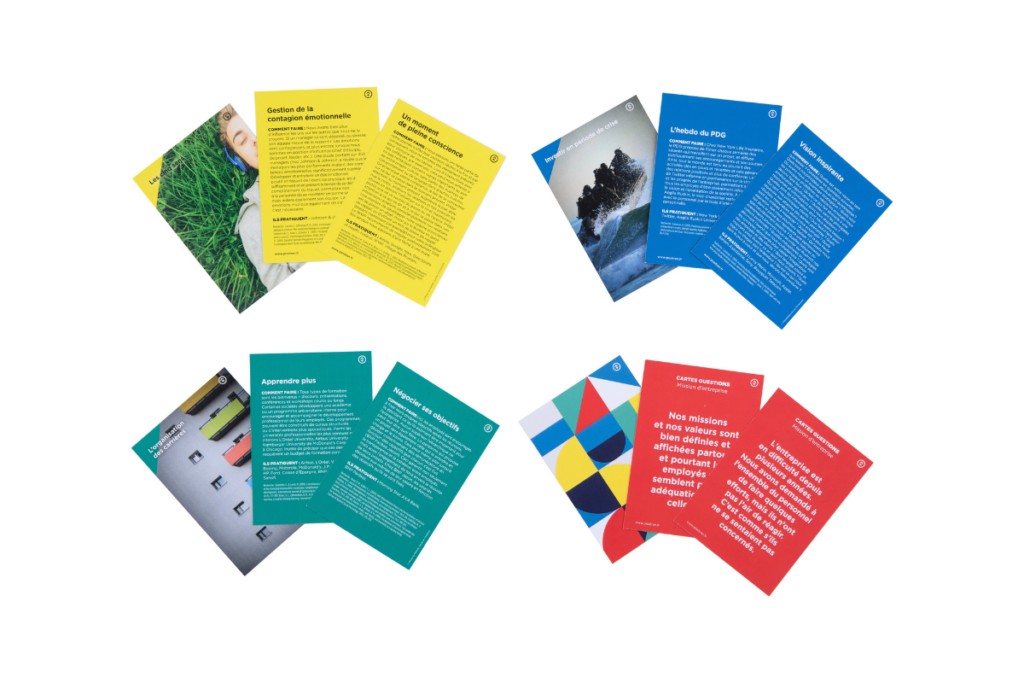



HEX
HEX is a research-based tool that combines images, words, and symbols to enable learning, creative collaboration, and shared action. Through narratives that explore deeper meanings, using HEX helps coaches, leaders, teachers, and many others accelerate understanding and learning related to positive psychology, goal setting, and creativity. HEX is suitable for children, adolescents, and adults.
Used worldwide and available in English, French.

Product Description
HEX consists of 200 cards:
* 105 images
* 78 words (24 of which come from VIA's character strengths)
* 17 symbols
As well as a 60-page guide that includes:
* The science behind HEX, including an introduction to positive psychology and the use of narratives in positive psychology.
* The Hands On Thinking™ (HOT) method
* The HEX user guide with checklists and a preparation guide
* Eight detailed step-by-step session guides
Picture cards help participants form metaphors. The images are carefully chosen and vary greatly in their expression and aesthetics. Word cards help participants put complex thoughts into words. They are clearly positive, negative, or neutral. Symbol cards represent something between words and images. There are recognizable icons that help participants share ideas in a simple and easy-to-understand way.
Using metaphors, narratives, and symbols, HEX provides insights into areas associated with doing well and doing well. The hexagonal shape of the cards encourages participants to examine the connections between their own card and those of other participants. In this way, the tool helps secure learning communities.
Who is it for?
HEX is a professional facilitation tool. Coaches, trainers, psychologists, therapists, youth workers, teachers, career counselors, managers, human resources specialists, and curious individuals from around the world use it and discover new ways to apply it every day.
Its use
DID YOU KNOW? – 20% SPEAK 80% OF THE TIME
Use HEX to neutralize the unfortunate 80/20 dynamic, so that the minority does NOT define the majority.
Using HEX should never be an end in itself. HEX is a tool that allows participants to reach a higher level of understanding of the topic they are exploring. By combining the practice maps with the Hands on Thinking™ method (described in the guide included with HEX), you can expect the tool to assist you as a facilitator in your work to secure learning communities.
Example exercise guide:
A good start:
1. Spread the HEX cards on a suitable table.
2. Let participants find one or two cards that say something about themselves that other participants probably don't know.
For example, you might say, “I now ask you to choose two cards. These could be pictures, words, symbols, or a mixture. The cards you choose should tell you something that most of the other participants probably don’t know."
3. Participants should now pair up and share their stories behind the cards with each other.
After two or three minutes, people tell people to find a new partner. Repeat the exercise five to six times.
HEX consists of 200 cards:
* 105 images
* 78 words (24 of which come from VIA's character strengths)
* 17 symbols
As well as a 60-page guide that includes:
* The science behind HEX, including an introduction to positive psychology and the use of narratives in positive psychology.
* The Hands On Thinking™ (HOT) method
* The HEX user guide with checklists and a preparation guide
* Eight detailed step-by-step session guides
Picture cards help participants form metaphors. The images are carefully chosen and vary greatly in their expression and aesthetics. Word cards help participants put complex thoughts into words. They are clearly positive, negative, or neutral. Symbol cards represent something between words and images. There are recognizable icons that help participants share ideas in a simple and easy-to-understand way.
Using metaphors, narratives, and symbols, HEX provides insights into areas associated with doing well and doing well. The hexagonal shape of the cards encourages participants to examine the connections between their own card and those of other participants. In this way, the tool helps secure learning communities.
HEX is a professional facilitation tool. Coaches, trainers, psychologists, therapists, youth workers, teachers, career counselors, managers, human resources specialists, and curious individuals from around the world use it and discover new ways to apply it every day.
DID YOU KNOW? – 20% SPEAK 80% OF THE TIME
Use HEX to neutralize the unfortunate 80/20 dynamic, so that the minority does NOT define the majority.
Using HEX should never be an end in itself. HEX is a tool that allows participants to reach a higher level of understanding of the topic they are exploring. By combining the practice maps with the Hands on Thinking™ method (described in the guide included with HEX), you can expect the tool to assist you as a facilitator in your work to secure learning communities.
Example exercise guide:
A good start:
1. Spread the HEX cards on a suitable table.
2. Let participants find one or two cards that say something about themselves that other participants probably don't know.
For example, you might say, “I now ask you to choose two cards. These could be pictures, words, symbols, or a mixture. The cards you choose should tell you something that most of the other participants probably don’t know."
3. Participants should now pair up and share their stories behind the cards with each other.
After two or three minutes, people tell people to find a new partner. Repeat the exercise five to six times.








